And instead of the heart of a fiery motor!
The government of our country has designated a priority direction for the development of the Arctic and sub-polar regions of Russia, and the implementation of these plans will require a huge amount of energy. The use of fossil fuel power plants almost led to an ecological disaster. For several years, we have to export and dispose of "remnants of economic activity" of the development of the North. In the further development of the Arctic, a stake was made on nuclear energy. It is considered more efficient and less damaging to the environment. Thanks to the work of nuclear scientists, a full cycle of nuclear fuel circulation has been implemented in our country. From mining, processing and operation to its enrichment, storage and disposal.
According to the forecast of specialists, power installations of the power range from 5 to 100 MW will be the most demanded in the Arctic.
The Nizhny Novgorod enterprise JSC "Afrikantov OKBM", in close cooperation with CDB MT "Rubin", designed a modular underwater power plant "Iceberg" for modern underwater drilling complexes engaged in geological exploration and mining of mineral resources. For such a complex suitable installation capacity ranging from 8 to 25 MW. In standalone mode and without maintenance staff, she will be able to work more than one year. Estimated lifetime - 30 years.
JSC "Afrikantov OKBM" is developing reactor installations for nuclear ships with 1954.
At the booth of JSC "Afrikantov OKBM" the project of a transportable megawatt-class nuclear power plant with a high-temperature gas-cooled reactor was also presented. It was designed for electricity and heat supply in the northern low-water areas of the country where there is a shortage of water.
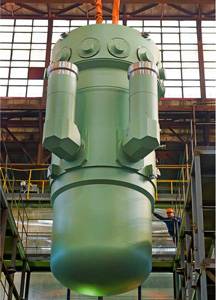 The most technologically promising power plants with a nuclear reactor RITM-200 will equip a series of three icebreakers of the 22220 project "Arctic", "Siberia" and "Ural", which are now being built at a shipbuilding plant in the city on the Neva. Each of the icebreakers will be equipped with a two-reactor power plant with a total thermal capacity of 2x175 MW.
The most technologically promising power plants with a nuclear reactor RITM-200 will equip a series of three icebreakers of the 22220 project "Arctic", "Siberia" and "Ural", which are now being built at a shipbuilding plant in the city on the Neva. Each of the icebreakers will be equipped with a two-reactor power plant with a total thermal capacity of 2x175 MW.Nuclear-powered icebreakers of the 22220 project are urgently needed now to guarantee our superiority in the Arctic. These multi-purpose nuclear-powered ships will have the opportunity to change the depth of their own cage, which will give them the advantage to carry out work both at sea and in shallow estuaries of northern rivers. Now for these tasks, two types of nuclear-powered icebreakers are used - linear (of the “Arctic” type) and small-sitting icebreakers (of the “Taimyr” type). Universal icebreakers will be able to destroy the three-meter layer of ice and conduct year-round caravans of ships in the difficult realities of the Arctic. Most likely, they will be used in areas of the Yamal and Gydan peninsula fields or on the Kara Sea shelf to carry out transport ships with raw materials to the Asia-Pacific region.
RHYTHM-200 is a dual-circuit nuclear reactor that uses ordinary (light) water as a moderator and coolant. It was designed for installation on icebreakers and floating power plant ships.
Serial production of reactor installations for nuclear icebreakers of a new generation
The main "highlight" of this reactor are four steam generators integrated in the core of the core. This design solution has reduced the weight and size of the power plant. If to compare with KLT-type reactor installations installed on modern icebreakers, the RHYTHM-200 RP will be twice as light, one and a half times more compact and, most importantly, more powerful than its predecessors on the 25 MW. All this should improve speed opportunities during the passage of ice. The new design reduces the risk of possible leakage from the primary working circuit, and the entire design of the installation greatly simplifies its transportation and assembly and dismantling. As we have said, this reactor with a thermal capacity of 175 MW will develop engine power up to 30 MW or generate up to 55 MW, operating as a power plant. The reactor is reloaded with fuel once in 7 years, and the lifetime has increased to 40 years.
Three Generation Reactors
RHYTHM-200 is a third-generation civil ship class reactor power plant. So, compared to the second generation (KLT-40 family), it implements the idea of replacing the block layout with an integral one.
On the basis of RHYTHM-200, a new project was developed. RHYTHM-200M (2х50 MW) for an optimized floating power unit (OPEB). It will be a highly mobile system that generates electricity and heat for industrial needs or domestic consumption. Also completed the design of the installation for an offshore atomic icebreaker RHYTHM-200B (on 209 MW) and installations RHYTHM-400 with a thermal capacity of 2x315 MW for the nuclear icebreaker "Leader" (project 10510).
As before, the main task of nuclear-powered icebreakers is to ensure continuous navigation of large-capacity caravans of ships along the Northern Sea Route and to carry out expeditionary expeditions to the Arctic.
Russian Defense Minister Sergei Shoigu said recently that the Arctic is already becoming an important region in which the military-strategic and territorial interests of a whole group of countries intersect.
He noted that these conditions may provoke the emergence of new conflicts. Therefore, for the Armed Forces of Russia, the priority tasks are to protect national interests in the Arctic to ensure its further development.
While the material for this article was being prepared, I came across an interesting archival information that 55 had been launched an atomic reactor that had been designed specifically for work in Antarctica years ago.
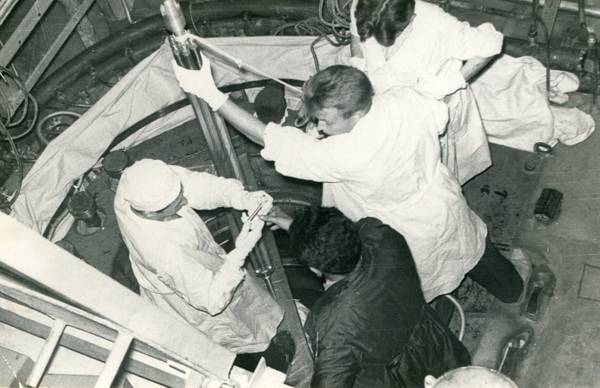
Arbus - such a ridiculous name was given to a prototype of an atomic reactor block installation, designed in the distant 1965 year for the needs of Soviet research stations in Antarctica. At one time a large program of various scientific studies was planned there. But during the first trial operation of the reactor at NIIAR, an effect was discovered due to which the fuel elements overheated, which led to their destruction and the impossibility of continuing the operation of the reactor without cleaning or completely replacing the fuel cells. And with such problems, sending a power plant to Antarctica was impossible.
But soon, after the delay in sending the reactor, an international agreement was concluded prohibiting the use of atomic energy in Antarctica. Although this idea was not destined to be realized practically, on the basis of ARBUS, the RIAR staff obtained invaluable experience in the operation of reactors of this type, and Soviet science was enriched with fresh ideas for the development of nuclear energy.
Reactor RITM 200 for icebreakers and submarines and aircraft carriers
- Kantemirov Victor
- JSC "Afrikantov OKBM" and the site atomic-energy.ru
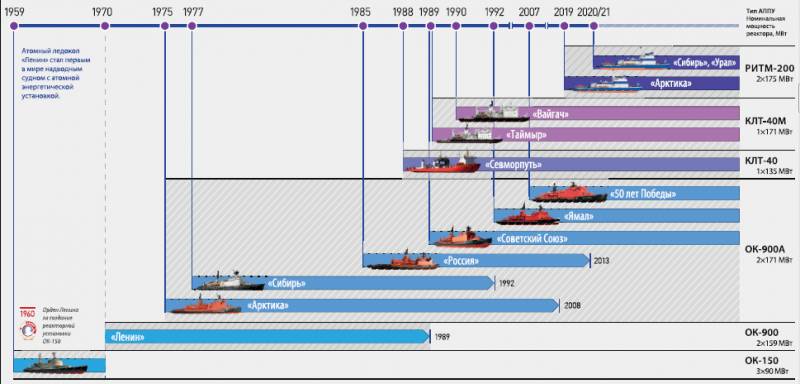
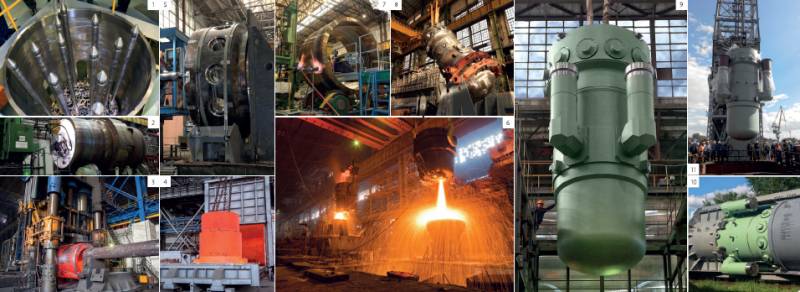
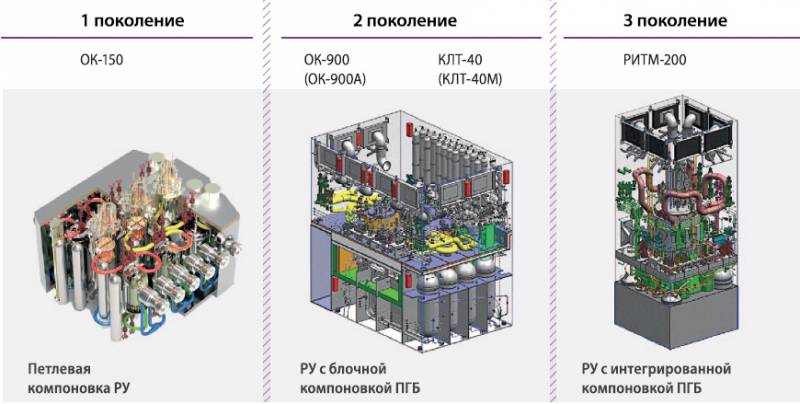
Information